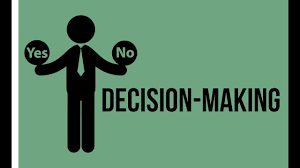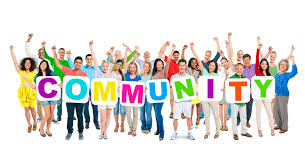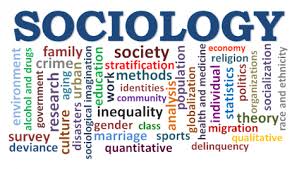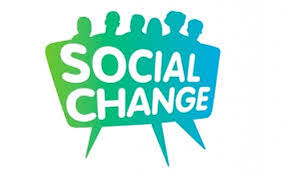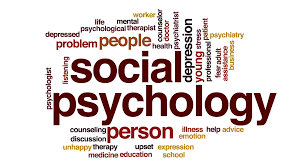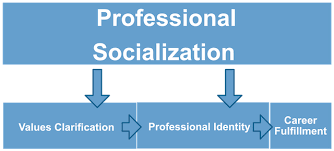
Professional socialization Essay
Order Instructions:
The Associate Degree in Nursing program at Excelsior College is designed for individuals with significant clinical health care experience. This means that all students have provided some aspect of health care for patients. Transitioning to the role of the Professional Nurse requires development of a new framework in your approach to patient care. The process of role transition requires you to reflect on what knowledge and skills you bring as a student and how you transform into the role of the professional nurse. While not all students in the program are licensed practical nurses similarities exist in the evolution of your current position to a new role.
Using APA format, write a six (6) to ten (10) page paper (excludes cover and reference page). A minimum of three (3) current professional references must be provided. Current references include professional publications or valid and current websites dated within five (5) years. Additionally, a textbook that is no more than one (1) edition older than current textbook may be used.
Read the following and then compose your paper:
Chapter 4: Role Transition (Reprinted with permission from: Lora Claywell (2009) LPN to RN Transitions 2nd ed.) St. Louis, MO: Elsevier.)
Ellis & Hartley (2011). Nursing in Today’s World: Trends, issues and management (10th ed.). Philadelphia, PA: Lippincott, Williams and Wilkins. Chapter 1, pp. 26-28, Characteristics of a Profession.
The paper consists of five (5) parts and must be submitted by the close of week six.
Part I: Define professional socialization. Using the criteria for a profession described in Chapter 1 of the Ellis and Hartley textbook, discuss three (3) criteria of the nursing profession which support professional socialization.
Part II: Refer to the Four Stages of Role Transition listed at the end of the Module Notes for this module. Read and summarize each stage. Then, identify the one stage which you are currently experiencing and support your decision using current literature.
Part III: Identify two barriers which may interfere with accomplishing Claywell’s FOURTH stage of role transition. For each barrier, describe two (2) resources to overcome each one. (total of 4 resources).
Part IV: Claywell (2009) discusses 8 areas of differences between the LPN and RN roles: Assessment skills, Patient teaching skills; Communication skills; Educational preparation; Intravenous Therapy; Legal responsibilities; Nursing care planning; Thinking skills. Choose three (3) differences and provide supporting evidence how the differences you selected are implemented AND why they are such an integral part of the RN role.
Part V: Conclusion. Describe your plan for socialization into the role of the professional nurse.
Compose your work using a word processor (or other software as appropriate) and save it frequently to your computer. Use a 12 font size, double space your work and use APA format for citations, references, and overall format. Information on how to use the Excelsior College Library to help you research and write your paper is available through the Library Help for AD Nursing Courses page. Assistance with APA format, grammar, and avoiding plagiarism is available for free through the Excelsior College Online Writing Lab (OWL). Be sure to check your work and correct any spelling or grammatical errors before you submit your assignment.
You are required to submit your paper to Turnitin (a plagiarism prevention service) prior to submitting the paper in the course submission area for grading.Access is provided by email to the email address on record in your MyExcelsior account during week 2 of the term. Once you submit your paper to Turnitin check your inbox in Turnitin for the results. After viewing your originality report correct the areas of your paper that warrant attention. You can re-submit your paper to Turnitin after 24-hours and continue to re-submit until the results are acceptable.Acceptable ranges include a cumulative total of less than 15% for your entire paper, and no particular area greater than 2% (excluding direct quotes and/or references).
See the videos below for instructions on how to submit your paper to Turnitin and view your Originality Report.
Video – Submitting a Paper
Video – Viewing Your Originality Report
When you’re ready to submit your work for grading, click Browse My Computer and find your file. Once you’ve located your file click Open and, if successful, the file name will appear under the Attached files heading. Scroll to the bottom of the page, click Submit and you’re done.
This activity will be assessed according to the NUR108 M6A3: Professional Role Socialization Paper Rubric.
SAMPLE ANSWER
Part 1: Professional socialization
To become a registered nurse, LPN must undergo a process known as professional socialization. The professional socialization entails two processes, namely a) formal socialization which is a process that involves educative experiences which teach the LPN on strategic approaches which include physical assessment, appropriate diagnoses and ways to design care plan as well as administering of patient education. The other processes are the informal socialization, which includes social interaction with other healthcare providers, ways to communicate patient information and to sustain patient-nurse mutual respect and relationship. These processes require an LPN to have core competencies such as critical thinking process in order to deliver individualized and patient centered care (Dinmohammadi, Peyrovi, & Mehrdad, 2013).
Various authors have different perception of professional socialization. Some of the definitions revolve around the concepts that it a process through which student nurses are inducted into nursing culture. This entails the acquisition of skills and attitudes that define the patterns as well as of taking up social roles as expected by the societal structure. Professional socialization is a learning process that entails acquisition of new traits and abandoning old practices and includes all the consequences of the nursing program whether intended or unintended. There are major themes that emerge from the definitions, which are related to values, standards expected by the nursing professional bodies. The process of socialization is a critical concept in the nursing program, which occurs in the institutional level and in healthcare facility contact. In graduates, professional socialization occurs through training and influence of the work environment. The work environment can discard some of the professional values obtained through education and other aspects can be sustained through organization preferences and restrictions (Kramer, Maguire, Halfer, Brewer, & Schmalenberg, 2011).
The transition process entails role socializations. Role refers to expectations set and defined by the society in patient care. The set of expectations can be either ethical or unethical. The set of expectations facilitate the formulation of standards that acts as a checklist used to evaluate whether society expectations are met. The nursing practice criteria facilitate professional socialization. The nursing practice involves various stakeholders, including health assistants, specialist’s nurses, community nurses, and ward managers. The first criteria require that the nurses must treat every person with humanity and dignity. It is important to show sensitivity and compassion and to show that they respect the healthcare stakeholders equally (Porter-Wenzlaff and Froman, 2008).
The other criterion is the issue of accountability and responsibility. This is to ensure that they are held accountable of their decision and judgment. This ensures that the RN is decisions made are ethical and meets the professional body’s requirements and law. The other criteria involve effective communication skills and interpersonal competencies. This involves appropriate interactions with the people in healthcare, including patients, patients caregiver, and their families to ensure that they are adequately informed, empowered to make informed choices. The communication with other healthcare stakeholders involves the recording of health information and treatment report. The patient health information is very confidential and sensitive. The RN criteria are to ensure that they appropriately deal with patients complaints, and that they report the patients concerns conscientiously. This is only effective if the healthcare staff works in team to ensure that care is coordinated ensuring that healthcare provided is of highest standard and of the best outcome (Goodfellow, 2014).
These criteria are very important as they ensure that as LPN is undergoing professional socialization, they get equipped with vital competencies that will help them identify effective interventions. Professional socialization includes all other subconscious processes that have been internalized, the set of expected behavior and standards by professional bodies. Professional socialization also entails the also taking the established RN goals, and integrating the standards and roles into practice. It involves embracing ethical norms and values of RN profession and advocating for them. A successful-registered nurse is one who is committed to match the level of the established to ensure that patient health is promoted and intervention delivered is effective. The RN is a counselor and educator. The transition process is to empower the RN and to add valuable information to attain comprehensive quality care (Dinmohammadi, Peyrovi, & Mehrdad, 2013).
Part 2 Stages of Role Transition
Professional socialization is a pathway that entails four main stages of role transitions. The stages are described by challenges and numerous role dynamics that could confuse LPN. However, LPN’s attitude and personal attributes as well as their commitment to theoretical and practical nursing lessons enable the student to move across the stages faster or slower. The first stage occurs when LPN and LVN applies for RN education program (postgraduate program). The stage is described by many emotions, including excitement for entering a new field and fear of the unknown and the unexpected. In most cases, the student nurse is skeptical about the course program and outline as the student feels that they already know so much in nursing practice, having practiced for many years. These individuals are very competent because of their vast experiences and will more likely have an attitude during their first years in the program (Kramer, Maguire, Halfer, Brewer, & Schmalenberg, 2011).
The second stage occurs later at phase. This phase is described by dissonance feelings, which are often associated with their learning capacities. The student is required to take assignment and other nursing practice chores in depth than during their undergraduate program. This often results to increase in anxiety, especially when the nurse student scores low grades below their expectations (Dinmohammadi, Peyrovi, & Mehrdad, 2013). In some cases, students become frustrated as they feel that they cannot succeed beyond this stage. The challenges are also common during practical where students could face a dilemma when assessing patients from diverse cultural background and traditional values. This stage is described by high doubts and insecurity. This is because the grading systems are very different from the previous and the tutors demand for higher achievements and grades. This could make the student feel incapable of success and yearn to leave the project halfway. It takes a lot of self-confidence and discipline to ensure that the student adapts to the systems requirements, and that they can move to the nest stage (Farrell, Payne, & Heye, 2015).
The third stage consists of self-actualization as the student castoffs previous approaches to nursing practices and start embracing new behavior. The student nurse at this stage tends to have better insights of addressing patient needs and often portray her willingness to gain valuable knowledge in nurse practice. This stage, the student is less frustrated or anxious about their success or failure, and focuses on the final goal of gaining more knowledge in nursing. The fourth and last stage is described by more relaxed. The nurse student adopts the new attitudes and incorporation of registered nurse skills and competencies in their routine practices. The student in this stage is more knowledgeable and contented, but still focuses in achieving even higher achievement in nurse practice through research on the best practices that offer comprehensive care (Dinmohammadi, Peyrovi, & Mehrdad, 2013).
I am currently at the third stage of the role socialization. This is the most challenging part of the transition process. Having to let go the previous experiences and way of thinking have not been easy. However, I finally learnt to adopt new nurse practice knowledge and comprehensive care. In this stage, I have learnt to be culturally competent and even matters that were thought to be minor such as patients’ values and preferences. The transition processes have instilled the importance of evidence-based practice. This includes the process of identifying health care gap, assessing care plan, designing, implementing, and the reflection of the outcome. These are key competencies in registered nurses (Melrose, Miller, Gordon, Janzen, 2012).
Part 3: Fourth Stage barriers and resources to overcome the barriers
Many barriers face the transition process. To start with, there could be lack of professionalism with some of the staff that the students interact. This implies that the students lack role models that can guide them on the appropriate attire, professional and unprofessional behavior. In some cases, the students lack a source of support to enhance professionalism. This could make the students engage in unprofessional behavior. The students face more challenges as they may are not able to acquire communication skills. The second main barrier is the environment in both at schools and home environment (Dinmohammadi, Peyrovi, & Mehrdad, 2013). The peers and personnel in the school and place of practice are very important in establishing a cultural competent profession. The education through which the students undergo could be efficient and well organized. In some cases, the school environment may be the barrier in ensuring that the student is trained to their full potential. In some organization are only interested in gaining monetary part and making the students to graduate and to be employed. The students are not taught on leadership; and how to present themselves in the image of professionalism. This could also occur during the placing of practicum courses. In most places, the schools are not responsible of assigning the nurse student in these healthcare facilities. Therefore, the schools are not assured on the quality of the students experiences being taught in these healthcare facilities. There are concerns that some of the health care facility environments do not enhance professionalism of the students (Price, 2009).
The best approach to address the lack of support challenge is by establishing rules and regulations in the field. This will help the students in gaining people who will mentor them. The problem can e compounded through peer mentoring as the students and junior-student mentoring resources. This will adequately relieve the physical and mental demands. This could be in the form of chat rooms, web conferencing, and other discussion platforms. These are avenues where nurse students can raise concerns on issues they feel that they are challenging. To sustain personal goals is important to deliver quality care. The second barrier can be addressed through establishing of school based vocational programs. This offers a chance for the nurse student to mingle with key personnel in the healthcare industry, particularly the nurse. The healthcare facility where the students are stationed must be guided by set nursing practice ethical guidelines to ensure that nurse students are not bullied, or harassed (Kearney-Nunnery, 2009)
Part 4: differences between LPN and RN
In both professions, care planning is a very critical tool. This is especially very important when delivering quality care. In LPN roles, care planning involves the identification of the problem; identify the healthcare demand of the patient and formulation of implementation plan. The care-planning stages are also present in RN, but the planning is in depth and of broader context. The RNs are equipped to enable them apply critical thinking, especially when assessing service users health complication. The teaching program for RN emphasizes on psychosocial aspects of the patient’s psychological care. The RN is trained such that he/she is detail oriented all through the designing and implementation processes. The RN outcome evaluation is reflective and involved in depth analysis to ensure that the care plan made is in accordance with the criteria of nursing practice and expectations of nursing practice regulations and the standards (Porter-Wenzlaff and Froman, 2008)
LPN and RN roles differ in terms of legal responsibilities. Registered nurses receive comprehensive training on ways to manage long-term care in the healthcare facility. This is through the training of long-term care both in practice and in training. The RN is adequately equipped in roles such as managerial tasks, leadership, and in administrative work. This places the RN at higher place in terms of legal responsibilities because of their thorough education background and vast experiences. This implies that the RN is assigned duties that require higher thinking capacity and ability to make ethical decisions and judgment (Melrose, Miller, Gordon, Janzen, 2012).
Quality care delivery is supported by teamwork by healthcare staff. The teamwork is effective through importance of communication skills. Communication skills are often introduced in nursing during LPN training level, and its goal is to help the student interact with the healthcare stakeholders effectively. However, at LPN level, the training duration is usually less and thus the subject is not trained extensively. The registered nurses are adequately prepared on the value of communication, and key competencies in communication skills. This equips the RN with essential skills that will enable interaction with service users more effectively. The training involves undertaking communication courses, psychology training, and sociology units. This is to equip the RN with core competencies of communication skills such as listening skills, ability to judge body language, and the ability to decode patient behavioral cues, which are important in evaluation of healthcare intervention (Melrose, Miller, Gordon, Janzen, 2012).
However, the differences in roles between RN and LPN do not imply that one group is lesser than the other is. Every person in nursing contributes significantly in provision of quality care. Therefore, even though there are underlying differences between RN and LPN scope of practice, all nurses at all levels must be eager and willing to learn more about nursing practice. However, the nurse undergoing transition must learn the differences in roles between the concepts of the nurse in order to enable them identify the need to advance their practices. There are five major boundary’s determinants of nurse practice, which include the nursing process, conceptual frameworks, theoretical frameworks; nursing codes of ethics in both the international and national level and the standard of practice (Porter-Wenzlaff and Froman, 2008).
Part 5: Conclusion
The aim of the article was to highlight the process of socialization in nursing. Professional socialization is defined as the learning process through which the nurse student education, skills, knowledge, and behaviors are molded to suit the set standards of nursing roles. Through the professional socialization process, I have identified that nursing practice requires more to the acquisition of scientific knowledge. I have learnt how to relate to the other nurse students, which has facilitated the ability to construct personal identities. Additionally, it has also been established that the socialization process will only occur when I begin to work in the healthcare facilities, and that the values and attitudes taught in college will be assessed according to the extent of my integration in the nursing practices in the organization. The adjustment process will influence healthcare stability, satisfaction, commitment, and mutual respect as well as the involvement with healthcare facility activities (Claywell, 2009).
Through the professional socialization process, nurse’s roles at different levels define the student extent of transition. The way the student nurse integrates in the healthcare system defines their level of confidence and capability. The aspect of nurse role is very important is nursing practice as it helps a student nurse develop identity, self-esteem and self-confidence through the interaction of judgments as well as role models. Through these practices, one is bale to acquire key components of nursing practice, which include critical thinking, i.e. having the big picture of the matter. The roles also includes on strategies to seek evidence-based research to provide the most supported care and to ensure that interventions outcomes are positive (Ares et al., 2014).
The transition process is faced with numerous barriers and challenges as they move from one level to another including financial difficulties and inability to maintain the balance between work and education. Other anticipated barriers include the conflicts of ideas that arise as the nursing student brings in values and believes that are contradictory with healthcare facility culture. Through this process, I intend to seek mentorship with the relevant staff in my specialty so that they can guide me in through the transition processes (Porter-Wenzlaff and Froman, 2008). During the mentorship, I intend to change my values and attitudes with the aim of becoming more versatile such that I can comfortably fit in most of the healthcare organization. This is important because professionals understand better the attitudes and values that are important and compatible with the healthcare specialty. This will heighten the nursing core competencies and improve the ability to improve quality care in my precinct. The process is important because it facilitates in ensuring that am molded in a professional manner where there is no room for mistakes and poor judgments even when under pressure (Melrose, Miller, Gordon, Janzen, 2012).
References
Ares, T. (2014). Professional Socialization of Students in Clinical Nurse Specialist Programs. Journal Of Nursing Education, 53(11), 631-640. https://www.doi:10.3928/01484834-20141027-03
Claywell, L. (2009). LPN to RN Transitions 2nd ed.) Role Transition (Reprinted with permission from: St. Louis, MO: Elsevier
Dinmohammadi, M., Peyrovi, H., & Mehrdad, N. (2013). Concept Analysis of Professional Socialization in Nursing. Nurs Forum, 48(1), 26-34. https://www.doi:10.1111/nuf.12006
Farrell, K., Payne, C., & Heye, M. (2015). Integrating Inter-professional Collaboration Skills into the Advanced Practice Registered Nurse Socialization Process. Journal Of Professional Nursing, 31(1), 5-10. https://www.doi:10.1016/j.profnurs.2014.05.006
Goodfellow, L. (2014). Professional Socialization of Students Enrolled in an Online Doctor of Philosophy Program in Nursing. Journal Of Nursing Education, 53(10), 595-599. https://www.doi:10.3928/01484834-20140922-06
Kearney-Nunnery, R. (2009) Making the transition from LPN to RN. ; Philidelphia, Davis.
Kramer, M., Maguire, P., Halfer, D., Brewer, B., & Schmalenberg, C. (2011). Impact of Residency Programs on Professional Socialization of Newly Licensed Registered Nurses. Western Journal Of Nursing Research, 35(4), 459-496. https://www.doi:10.1177/0193945911415555
Melrose, S., Miller, J., Gordon, K., Janzen, K.J. (2012). Becoming socialized into a new professional role: LPN to BN Student Nurses Experiences with legitimation. Nursing research and practice Article ID 946063, 8 pages.
Price, S. (2009). Becoming a nurse: a meta-study of early professional socialization and career choice in nursing. Journal Of Advanced Nursing, 65(1), 11-19. https://www.doi:10.1111/j.1365-2648.2008.04839.x
Porter-Wenzlaff, L., Froman, R.(2008) Responding to increasing RN demand: diversity and retention trends through an accelerated LVN-to-BSN curriculum. Journal of Nursing Education. 2008;47:231–234.
We can write this or a similar paper for you! Simply fill the order form!





